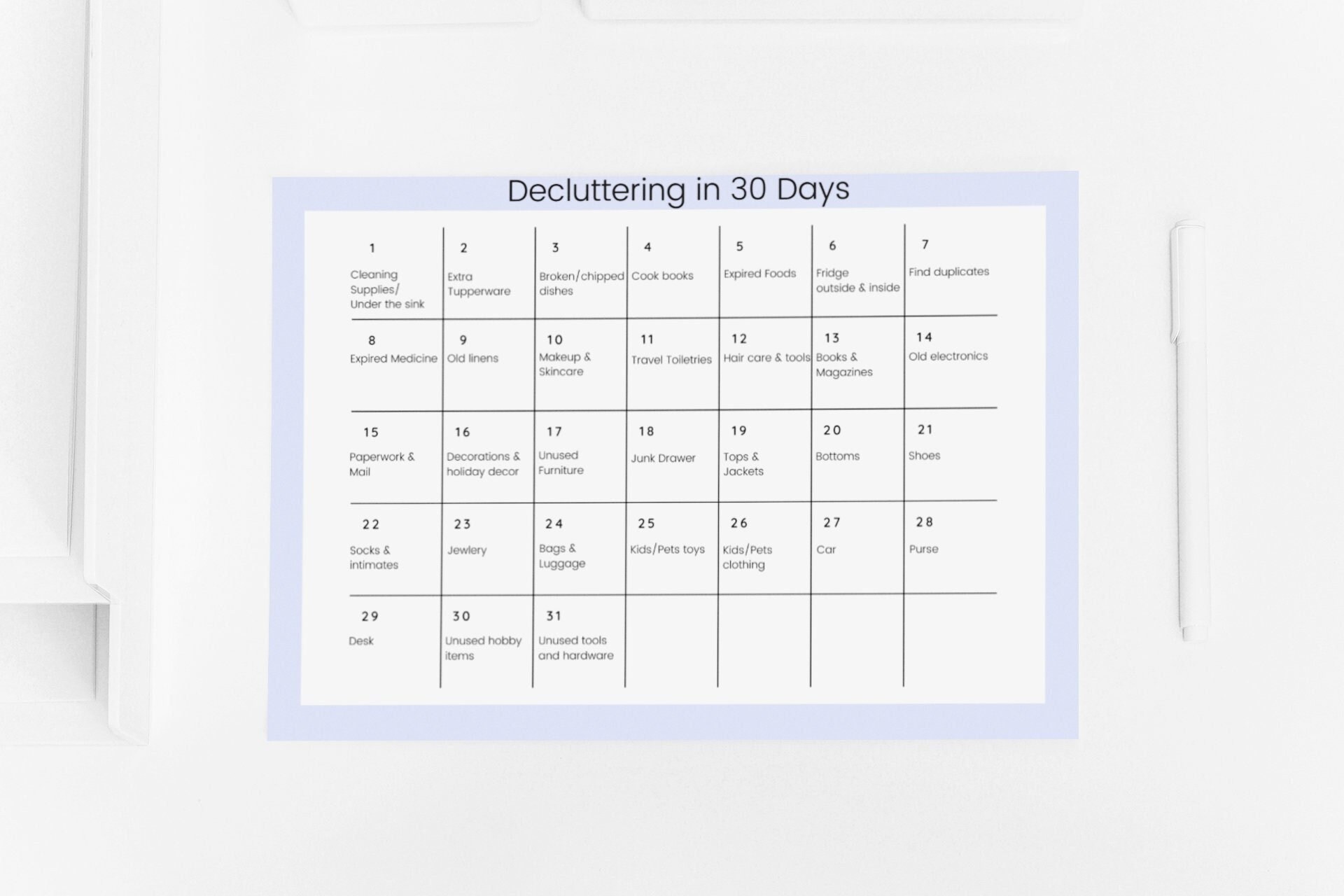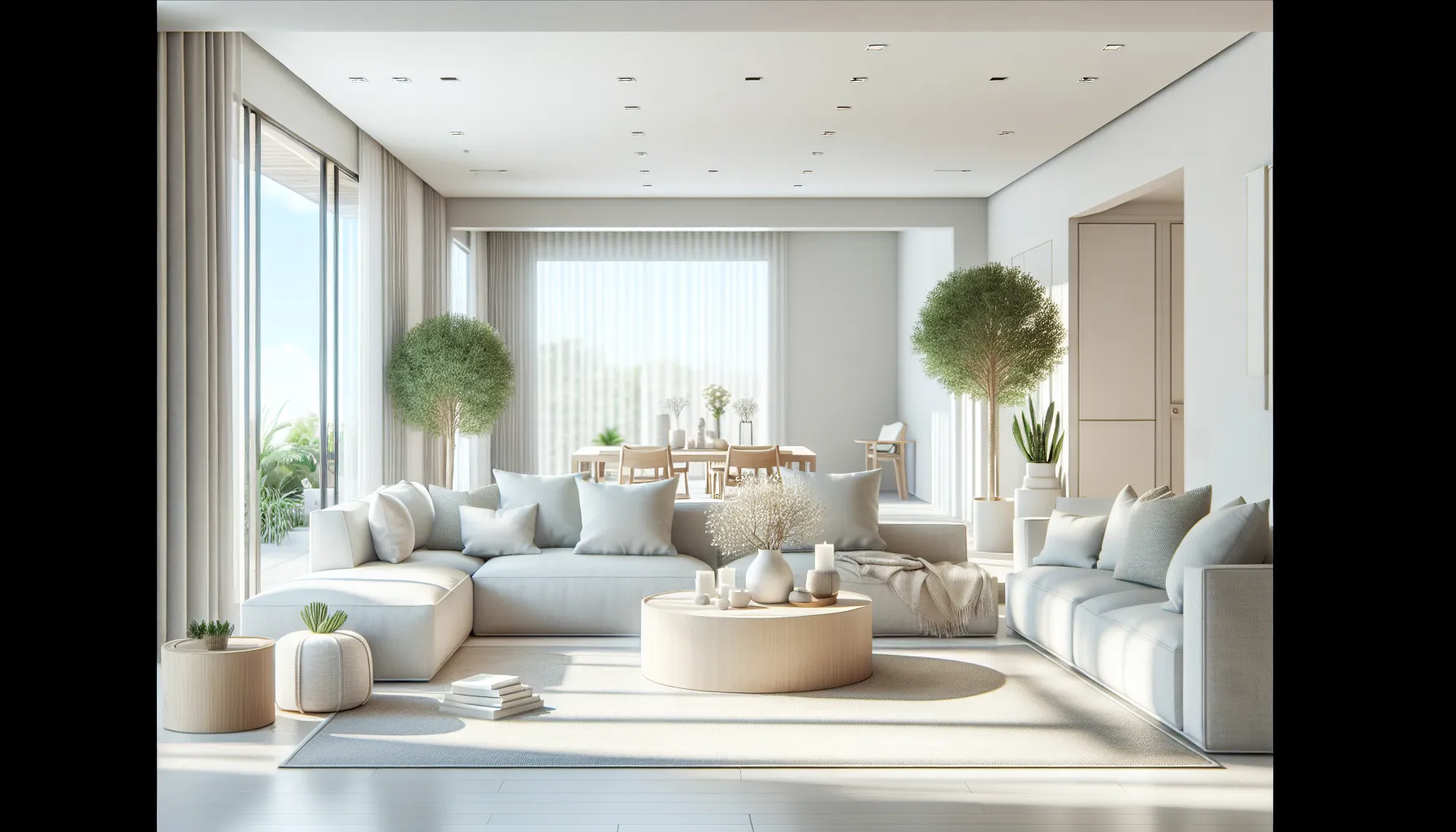July 21 2025
Key Takeaways
- Decluttering before selling your home creates a cleaner, more spacious environment that appeals to potential buyers and boosts your property’s perceived value.
- A clutter-free home photographs better for listings, attracting more interest and improving first impressions during viewings.
- Start early, tackle one room at a time, and use techniques like the 4-Box Method (Keep, Donate, Sell, Bin) for efficient decluttering.
- Highlight storage potential by organising cupboards, wardrobes, and spaces like garages or outdoor areas with neat, minimal layouts.
- Use temporary self-storage for non-essential items to maintain a functional, clutter-free interior during the selling process.
- Final touches like depersonalising the space, using neutral decor, and thoughtful staging ensure your home is inviting and market-ready.
Are you preparing to sell your home but feeling overwhelmed by the clutter? First impressions are everything, and a tidy, organised space can make all the difference. A clutter-free home not only looks more spacious but also helps potential buyers imagine themselves living there, increasing your chances of a quicker, higher offer.
Did you know that decluttering can actually boost your home’s value? A well-organised space photographs better, attracts more interest, and highlights your home’s best features. By simplifying each room and removing distractions, you create a welcoming environment that appeals to buyers and makes your home stand out.
Why Decluttering Is Essential Before Selling Your Home
Decluttering transforms your home into a more desirable property. By removing excess items, you make rooms appear larger and more inviting. Buyers often focus on how well a space functions and envision themselves living there; a clutter-free environment makes this easier.
A clean, organised home photographs better for listings. Online property searches typically form the first impression. Spaces free of personal items highlight the home’s best features and ensure it looks well-maintained, attracting more interest.
Decluttering also emphasises the functional use of space. Organised storage, like clear cupboards or underbed solutions, showcases ample storage options—a feature many buyers prioritise. If necessary, you could utilise self-storage facilities to temporarily house excess belongings, allowing for neat, open interiors during property viewings.
Simplifying your home positively impacts its perceived value. Buyers associate order and cleanliness with proper maintenance, encouraging higher offers and speeding up the selling process.
Planning Your Decluttering Process

Organising your home before selling ensures a smooth and effective decluttering experience. A clear outline helps avoid overwhelm and maintains focus on enhancing your property’s appeal.
When to Start and How to Prepare
Start decluttering early to allow time to sort, donate, sell, or pack items. Remove personal belongings like photographs or collections to help buyers imagine themselves in the space. Maintain functionality by keeping everyday essentials accessible during the process. Prepare key areas such as kitchen worktops, bedside tables, and dining spaces by clearing surfaces for a clean, open look.
Tackling One Room at a Time
Choose one room to declutter at a time, beginning with less emotional or infrequently used spaces like spare rooms. Progress systematically to main living areas and personal spaces like bedrooms. For each room, organise cupboards or wardrobes to showcase storage capacity. Similarly, refine garden spaces by trimming plants and minimising excess outdoor furniture, enhancing kerb appeal.
Simplifying Decision-Making
Sort each item using the 4-Box Method: Keep, Donate, Sell, or Bin. Focus on retaining items necessary for each room’s function, like restful decor in bedrooms or clear counters in kitchens. Where storage is limited, consider short-term solutions like a self-storage facility to keep surplus items out of sight. Ensure the space feels neutral and inviting to attract a broad range of buyers.
Room-By-Room Decluttering Checklist
A systematic room-by-room approach simplifies the decluttering process, making your home more appealing to buyers. Address each space individually to create a clean, inviting and spacious environment.
Kitchen: Clearing Counters and Organising Storage
Clear countertops of all non-essential items to give your kitchen a clean, open appearance. Pack away small appliances that aren’t used daily, such as blenders or toasters. Inspect cupboards and your pantry for expired food, discard it, and neatly organise remaining items. Use clear storage bins to group similar items, making the space look functional and tidy. Ensure counters sparkle by thoroughly cleaning sinks, taps and surfaces.
Living Room: Minimising Furniture and Decor
Remove unnecessary furniture to maximise the room’s sense of space and improve its flow. Declutter surfaces like shelves, side tables and coffee tables by storing or removing items such as books, magazines and remote controls. Opt for minimal, neutral decor to appeal to various buyers. Rearrange remaining furniture to ensure the layout feels open and welcoming.
Bedrooms: Streamlining Closets and Drawers
Declutter wardrobes by removing out-of-season clothing and excess items. Aim to show ample storage space by neatly folding or hanging remaining items. Use underbed storage for bulkier items to free up visible space. Pack away personal photographs and memorabilia to help buyers visualise the rooms as their own. Fresh, neutral bedding creates a calming and inviting atmosphere.
Bathrooms: Decluttering Essentials for a Clean Look
Store all personal toiletries out of sight to keep surfaces completely clear. Scrub fixtures, mirrors and tiles for an immaculate finish. Replace worn towels with fresh ones to enhance the space visually. Use subtle decorative touches, such as a small plant or neatly rolled towels, to create a spa-like feel.
Home Office: Sorting and Reducing Paperwork
Organise all paperwork by dividing it into keep, dispose, or store categories. Use boxes or filing solutions to contain papers neatly. Remove personal items, awards, or excessive decor to maintain a clean, functional workspace. Declutter desks by putting away unused equipment and supplies. Temporary storage, such as a self-storage facility, could ensure surplus furniture or belongings are out of sight during buyer viewings.
Garage and Outdoor Spaces: Creating Order and Curb Appeal
Begin by thoroughly emptying the garage to remove broken or unused items. Organise tools, sports gear and other items into labelled bins or on shelves. Clear pathways by tidying outdoor spaces, trimming hedges and mowing lawns. Ensure outdoor furniture is minimal yet clean to highlight available space. Add simple features, such as potted plants, to boost kerb appeal and make outdoor areas more inviting.
Room-By-Room Decluttering Checklist

A systematic room-by-room approach simplifies the decluttering process, making your home more appealing to buyers. Address each space individually to create a clean, inviting and spacious environment.
Kitchen: Clearing Counters and Organising Storage
Clear countertops of all non-essential items to give your kitchen a clean, open appearance. Pack away small appliances that aren’t used daily, such as blenders or toasters. Inspect cupboards and your pantry for expired food, discard it, and neatly organise remaining items. Use clear storage bins to group similar items, making the space look functional and tidy. Ensure counters sparkle by thoroughly cleaning sinks, taps and surfaces.
Living Room: Minimising Furniture and Decor
Remove unnecessary furniture to maximise the room’s sense of space and improve its flow. Declutter surfaces like shelves, side tables and coffee tables by storing or removing items such as books, magazines and remote controls. Opt for minimal, neutral decor to appeal to various buyers. Rearrange remaining furniture to ensure the layout feels open and welcoming.
Bedrooms: Streamlining Closets and Drawers
Declutter wardrobes by removing out-of-season clothing and excess items. Aim to show ample storage space by neatly folding or hanging remaining items. Use underbed storage for bulkier items to free up visible space. Pack away personal photographs and memorabilia to help buyers visualise the rooms as their own. Fresh, neutral bedding creates a calming and inviting atmosphere.
Bathrooms: Decluttering Essentials for a Clean Look
Store all personal toiletries out of sight to keep surfaces completely clear. Scrub fixtures, mirrors and tiles for an immaculate finish. Replace worn towels with fresh ones to enhance the space visually. Use subtle decorative touches, such as a small plant or neatly rolled towels, to create a spa-like feel.
Home Office: Sorting and Reducing Paperwork
Organise all paperwork by dividing it into keep, dispose, or store categories. Use boxes or filing solutions to contain papers neatly. Remove personal items, awards, or excessive decor to maintain a clean, functional workspace. Declutter desks by putting away unused equipment and supplies. Temporary storage, such as a self-storage facility, could ensure surplus furniture or belongings are out of sight during buyer viewings.
Garage and Outdoor Spaces: Creating Order and Curb Appeal
Begin by thoroughly emptying the garage to remove broken or unused items. Organise tools, sports gear and other items into labelled bins or on shelves. Clear pathways by tidying outdoor spaces, trimming hedges and mowing lawns. Ensure outdoor furniture is minimal yet clean to highlight available space. Add simple features, such as potted plants, to boost kerb appeal and make outdoor areas more inviting.
Managing Unwanted Items
Effectively managing unwanted items makes your home appear more spacious and organised, enhancing its appeal to potential buyers. Clear categories and a systematic approach simplify the decluttering process while ensuring responsible disposal.
Donation, Selling, and Disposing Responsibly
Categorise items you no longer need into options for donating, selling, or safe disposal. Donate usable items like clothing or furniture to local charities, shelters, or communities in need. Sell valuable belongings through online platforms or local car boot sales, ensuring items are cleaned to maximise appeal. For broken or unsafe items, follow local recycling guidelines or waste services. Properly handle hazardous materials, such as paint or batteries, while disposing of them.
Using Temporary Storage Solutions
Store non-essential belongings off-site to maintain a clutter-free and functional appearance in your home. Renting a self storage unit provides a secure option for keeping furniture, seasonal items, or packed boxes off the property. Prioritise organising stored goods in clearly labelled boxes for future convenience. Also, self storage ensures valuables remain protected while creating an inviting, spacious environment for prospective buyers.
Final Touches to Enhance Buyer Appeal

Creating a polished, welcoming home environment boosts buyer appeal and increases the chances of a speedy sale. Focus on details that make your home appear clean, spacious, and well-maintained.
Depersonalising and Neutralising Spaces
Pack away personal items like family photos, children’s artwork, and unique collections. These can distract buyers and make it harder for them to visualise the property as their own. Use neutral colours and minimal décor, such as light-toned cushions or simple artwork, to create an inviting yet impersonal atmosphere. Clear out wardrobes and cupboards, keeping only a few neatly organised items inside. An uncluttered space emphasises storage potential and makes rooms feel airy.
Staging Your Home for Maximum Impact
Stage each room methodically to highlight its purpose. Use fresh flowers, clean linens, and tasteful furnishings to elevate spaces without overcrowding them. In kitchens, clear countertops of unused appliances and align items neatly in storage units. Bathrooms benefit from subtle additions like fresh towels and small plants to evoke a spa-like feel. If storage is limited, utilise a self-storage facility to remove non-essential furniture and belongings. This ensures rooms remain functional and uncluttered, helping buyers focus on the home’s best features.
Conclusion
Decluttering before selling your home is a powerful way to maximise its appeal and value. By creating a clean, organised, and neutral environment, you allow potential buyers to connect with the space and envision it as their own. A well-prepared home not only attracts more interest but also encourages stronger offers, ensuring a smoother and more profitable sale. Take the time to simplify your space, and you’ll set the stage for a successful selling experience.

OFFICE HOURS
M-F: 8:30am – 5:00pm
SAT: 8:30am – 2:00pm
ACCESS HOURS
7 Days Per Week
5:00am to 10:00pm